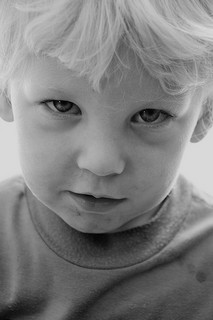One of the biggest challenges in knowing how to babysit kids and doing it well is to know how to respond when a child misbehaves. You are the adult assigned responsibility for the child, but are not the child’s parent, so it’s often tough to know how best to handle bad behavior.
Discipline is not fun for anyone, but it’s a necessary part of raising kids and teaching good behavior. Here we give you some tips on behavior management, including fostering open communication with parents and using positive discipline techniques to get the behavior parents and sitters want.

Keeping Open Lines of Communication with Parents to Establish Rules and Expectations
The first time you meet with a new family, whether at an interview or at the start of a first-time babysitting job, include a discussion about kids’ behavior. It should be a two-way conversation about how you will work together to encourage good behavior.
Parents should let you know the family rules and how they’d like you to help enforce them, and it’s a chance for you to voice your expectations and comfort level. This is a good opportunity for parents to alert you to problem areas, such as Little Charlie’s proclivity to bite or his big sister’s reluctance to keep her hands out of the fish tank, and to share corrections they’ve found to be especially effective. Parents should also want to know when there’s been a mishap and how you’ve handled it, so you can work together to avoid behavioral hiccups next time.
Helpful, Positive Discipline Techniques
Kids benefit from consistent and unified discipline from their caregivers, both parents and sitters. It helps to establish a comfortable, structured environment where kids know what is expected of them and what will happen if they decide to test the limits or veer from expectations. Be consistent in insisting that children follow the rules spelled out by their parents (within reason – sometimes a warning is all that’s needed!) and doling out the agreed upon consequences.
If behavior goes astray despite your best attempts at keeping the peace, here are some helpful tips and techniques for managing mishaps:
- One of the best strategies for getting kids to behave is to simply keep them happy and entertained. Watch for triggers that may cause trouble and steer clear of them. For instance, kids are more prone to meltdown or lash out when they are hungry, tired, over-stimulated or not getting the attention they require.
- Experts say never to raise your voice or lose control of your emotions when addressing poor behavior. Get down to the child’s eye level and calmly explain that the behavior was unacceptable, show your disappointment and state the consequence. Some of the most effective consequences for young children include time outs (one minute per year of age is customary), quiet time, loss of privileges (such as sweet treats or screen time) or an earlier bedtime.
- Rewarding good behavior while not over-reacting to bad shows kids that attention is paid to being well behaved. Verbally praise kids for playing nicely together, sharing, using good manners, and hand out rewards.
- If you regularly babysit for a family consider using a behavior chart to encourage positive conduct. You can reward kids with stickers for following rules, and establish a goal or prize they can reach if the good behavior continues. Offer to bring ice cream for a special treat or let them stay up later to watch a favorite movie.
By openly discussing family rules and discipline expectations with parents and consistently employing them with the kids you sit, you’ll earn the respect of both the parents and children and be able to more thoroughly enjoy your time spent babysitting.